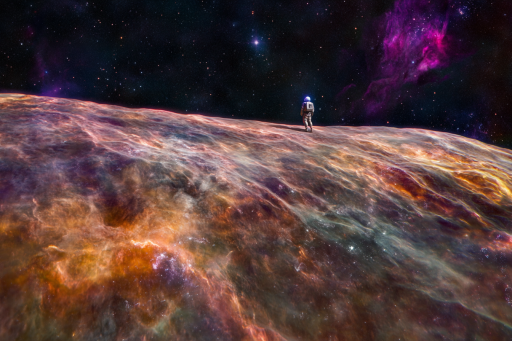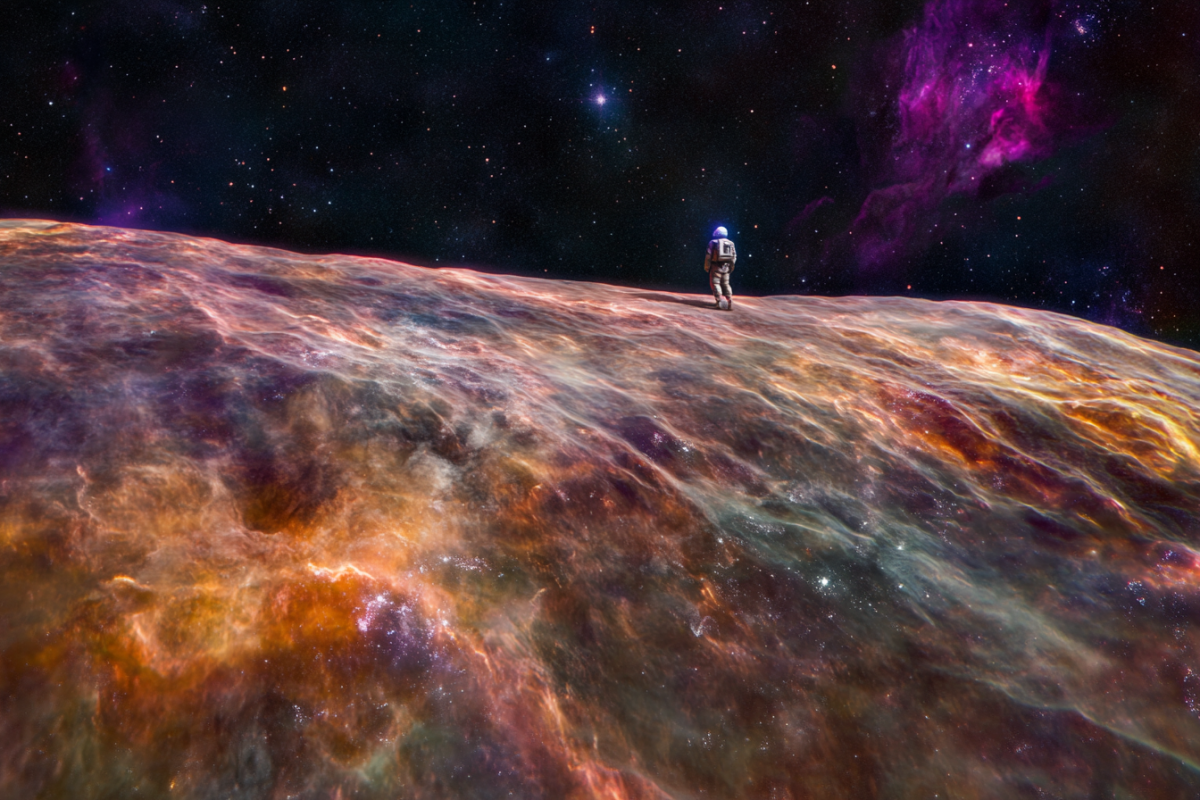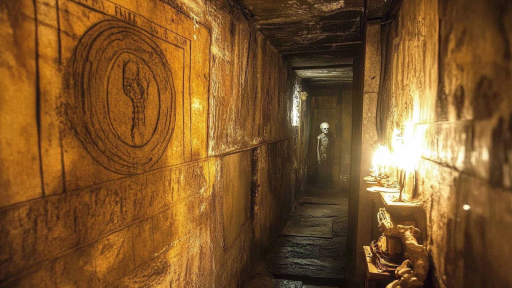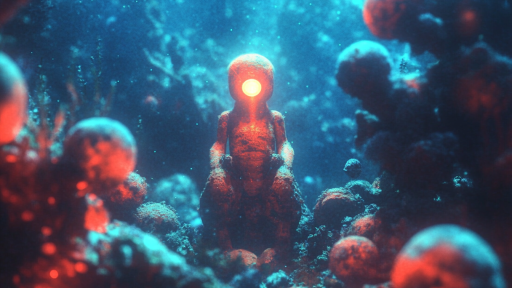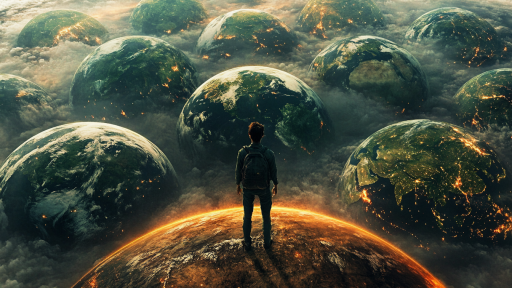
The universe is far stranger than we ever imagined, filled with rare and mind-bending wonders that challenge the laws of physics. From planets made of solid diamond to stars that pulse with unexplainable rhythms, the cosmos is home to some of the most bizarre phenomena ever discovered. Some of these realms are so extreme that scientists struggle to explain how they even exist. What other astonishing secrets might still be hiding in the unexplored depths of space?
The Diamond Planet – A World of Pure Crystal

A planet orbiting a pulsar deep in space has been found to be one-third solid diamond, making it one of the strangest exoplanets ever discovered. Scientists believe it was once a massive star that collapsed under extreme pressure, leaving behind a crystallized carbon core. This means that somewhere in the universe, a planet-sized diamond sparkles in the darkness of space. Could there be other jewel-like worlds waiting to be found?
The Boiling Ice Planet – A Paradox of Fire and Frost

On the exoplanet Gliese 436b, water exists in an impossible state—burning-hot ice. Extreme atmospheric pressure keeps the water molecules locked in a solid state, while the planet’s scorching surface temperature should, by all logic, turn it to steam. This mind-boggling world defies our understanding of how matter behaves in alien environments. Could it be a preview of strange new physics we haven’t yet discovered?
The Loneliest Rogue Planet – A World Without a Star

Drifting through the void of space with no star to orbit, rogue planets like Jupiter-mass PSO J318.5-22 exist in eternal darkness. Without the warmth of a sun, these wandering worlds remain cold and silent, yet some may still generate internal heat—potentially harboring hidden life beneath thick, icy shells. If planets can survive alone in the cosmic abyss, could entire civilizations exist on rogue worlds, unseen and undiscovered?
The Star That Shouldn’t Exist – A Cosmic Time Capsule

In the Milky Way, astronomers have discovered a star older than the universe itself—a cosmic contradiction that defies logic. Named HD 140283, or the Methuselah Star, it appears to predate the Big Bang, raising the possibility that our understanding of the universe’s origin may be incomplete. Could it be evidence of an earlier cosmic cycle—or something far more mysterious?
The Planet That Rains Molten Glass

On the exoplanet HD 189733b, winds blow at 5,400 mph, and the sky rains liquid glass sideways. This deadly world, located 63 light-years from Earth, has a deep-blue atmosphere resembling our own, but its beauty is deceiving—temperatures reach nearly 2,000°F. If planets this extreme exist, what other bizarre alien weather patterns might be waiting to be discovered?
The Darkest Known Planet – A World That Absorbs Light

The exoplanet TrES-2b reflects less than 1% of light, making it the darkest planet ever found. Its atmosphere absorbs nearly all radiation, leaving it as black as charcoal, with only a faint red glow from its heated core. This eerie world could provide clues about planetary atmospheres in extreme conditions, possibly even hinting at the existence of exotic alien chemistry never seen before.
The Cosmic Cold Spot – A Void That Shouldn’t Be There

Deep in space, scientists have found a massive void spanning over a billion light-years, where galaxies and stars seem almost completely absent. Known as the Cosmic Cold Spot, some speculate it could be evidence of another universe colliding with ours in the distant past. Could this mysterious void be a fingerprint of the multiverse hiding in plain sight?
The Pulsar That Acts Like a Lighthouse

Pulsars are rapidly spinning neutron stars that emit beams of radiation in perfect intervals, acting like cosmic lighthouses. Some pulsars pulse with such mathematical precision that early astronomers mistook them for alien signals. If these strange stars are the remnants of ancient supernovae, could they also be beacons of knowledge left behind by advanced civilizations?
The Hypervelocity Stars – Suns Flinging Through Space

Some stars in the Milky Way are moving so fast that they will eventually escape our galaxy entirely, flung by gravitational interactions with black holes or other massive objects. These hypervelocity stars defy the typical movement of celestial bodies, rocketing across space at millions of miles per hour. Could studying these rogue stars reveal hidden forces shaping the universe’s structure?
The Planet Covered in Endless Lava Oceans

Exoplanets like 55 Cancri e are so close to their stars that their surfaces have melted into vast oceans of lava, covering entire continents in fiery waves. These extreme conditions make Earth’s volcanoes look tame by comparison, with temperatures hot enough to vaporize rock itself. Could planets like these hold the secrets to how molten worlds eventually cool and evolve into habitable places?
The Great Attractor – A Force Pulling Our Galaxy Toward It

Scientists have detected a powerful force in deep space dragging entire galaxies—including our own Milky Way—toward it at immense speeds. Dubbed The Great Attractor, its true nature remains unknown, hidden behind thick cosmic dust. Could this gravitational anomaly be a gateway to something beyond our understanding of physics?
What Else Lies Beyond the Known Universe?

For every cosmic mystery we solve, new questions arise, pushing the limits of human knowledge. If the universe can create diamond planets, voids in space, and rogue worlds, what other astonishing wonders remain undiscovered? Perhaps the greatest discoveries are yet to come, waiting in the darkest corners of the cosmos.

